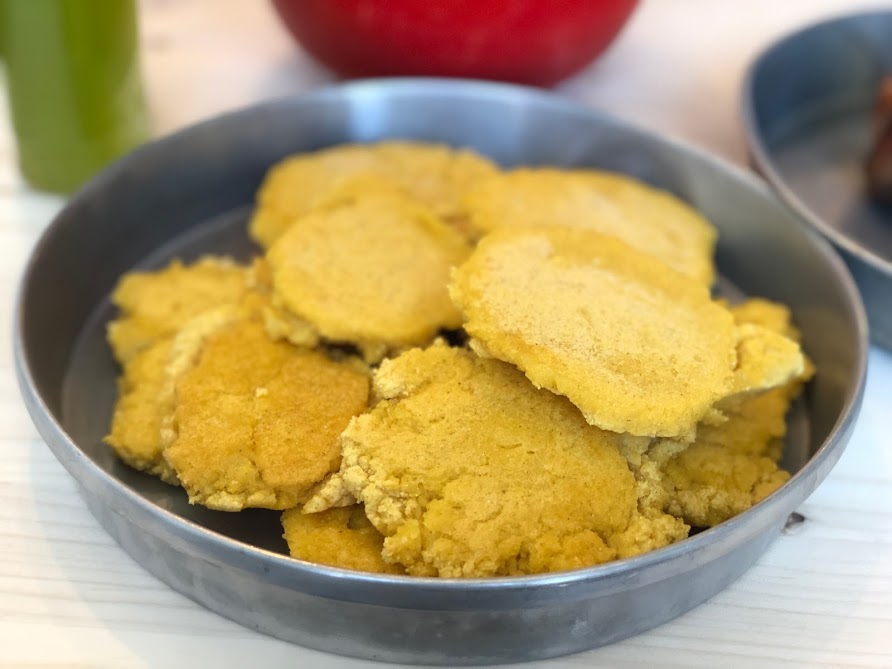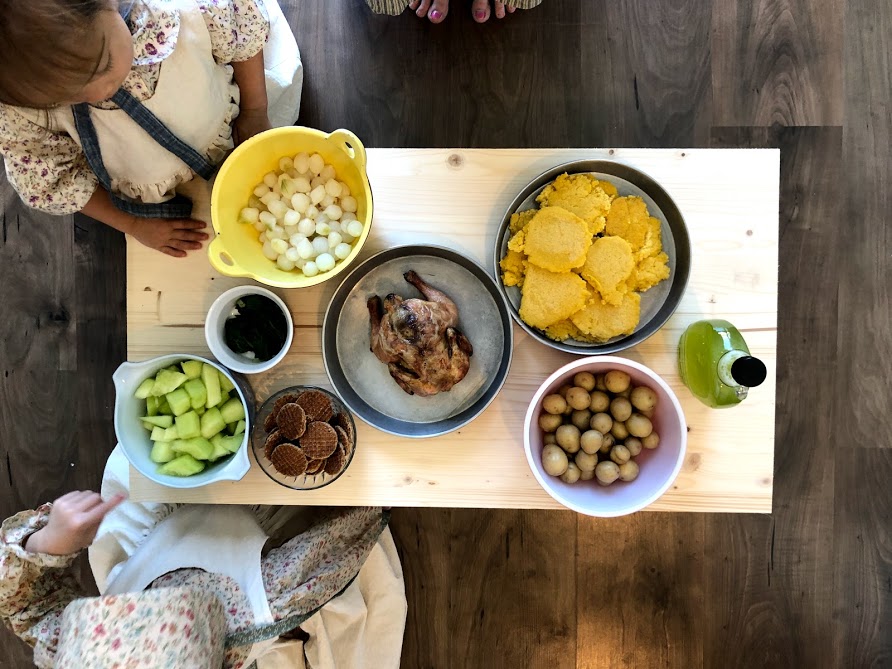Today, we learned about miracles and how Heavenly Father provides for us. We had quite the feast and talked about how good God is. See the other 5 posts for more details.
The activities that we did were catching quail, digging and gathering sego lily bulbs (pearl onions), gathering HoneyDew manna from the willows and bushes, making sugar from syrup, using that sugar to make honeydew syrup, making corn cakes, cooking the quail (cornish hen), boiling the sego lily bulbs (pearl onions for a similar look, tiny potatoes for a similar taste), boiling pigweed (spinach), and then eating all of that food + mini honey filled stroopwaffles (honey wafers).
First, we talked about The Children of Israel and how Heavenly Father provided quail and manna for them when they were in the wilderness.
Next, we learned about a couple of semi-modern (from the 1800s) providential miracles. We learned about the miracle of the quail. Next, we learned about another miracle from pioneer times. This one occurred during the Grasshopper Wars, when millions of grasshoppers (or Rocky Mountain Locusts) destroyed tons of crops and brought the threat of starvation.
The final thing that we talked about, while feasting on the symbols of Divine Providence, were experiences from our own lives when Heavenly Father has blessed us and taken care of us.
First, we talked about The Children of Israel and how Heavenly Father provided quail and manna for them when they were in the wilderness. We read Exodus 16:13-31 and Numbers 11:7-9 to learn more about manna (what is is, what it looked like, what it tasted like, when it appeared, how long it lasted, etc.)
I find it super interesting, especially after learning about dew during our Sheep Unit, that manna appeared early in the morning, and when the sun came out, the manna melted.
“And they gathered it every morning, every man according to his eating: and when the sun waxed hot, it melted.” (Exodus 16:21).
Again, there is something special about early mornings. Heavenly Father seems to teach that over and over again.
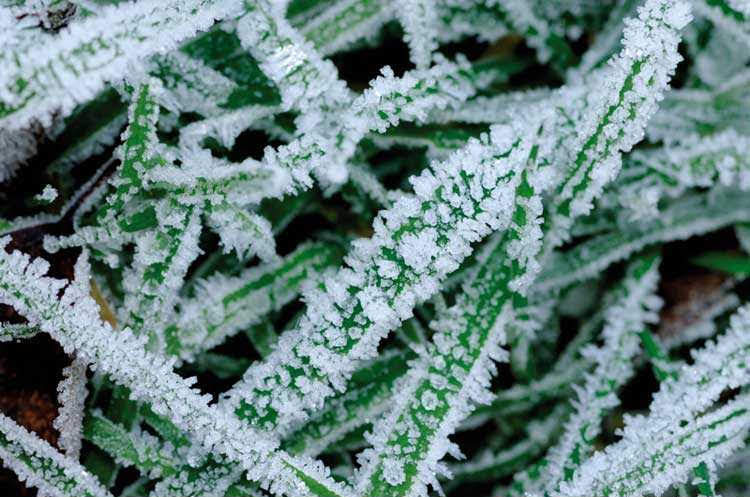
We learned about the miracle of the quail.
The last Saints that were forced out of Nauvoo camped on the west side of the Mississippi River with minimal supplies and food. More than 300 people, barely surviving. “Their main food was corn, which they ate boiled or parched. For water, they drank from the river. Many of those remaining suffered from disease and exposure to the elements.”
“Then on October 9, a miracle occurred. Thomas Bullock wrote that those in the ragged camp were amazed to see flocks of quail swoop overhead and then settle to the ground. “This morning we had a direct manifestation of the mercy and goodness of God, in a miracle being performed in the Camp,” he wrote.
“A large, or rather several large flocks of quails, flew into camp. Some fell on the wagons, some under, some on the breakfast tables. The boys and the brethren ran about after them and caught them alive with their hands. Men who were not in the church marveled at the sight.” “The boys caught about twenty alive,” he reported.
“Every man, woman and child had quails to eat for their dinner and after dinner the flocks increased in size.” And that was not all. “The quails flew around the camp, many delighted in it. Then all the flock would rise, fall around our camp again a few rods off and then would alight again and close to the camp.
This was repeated more than a half dozen times.” In this way, the Saints were able to have fresh meat at the start of their journey. “The brethren and sisters praised God and glorified his name,” Thomas recorded.” (Wagons West, pg 60-61).
Our “quail” was a Cornish hen. 🙂
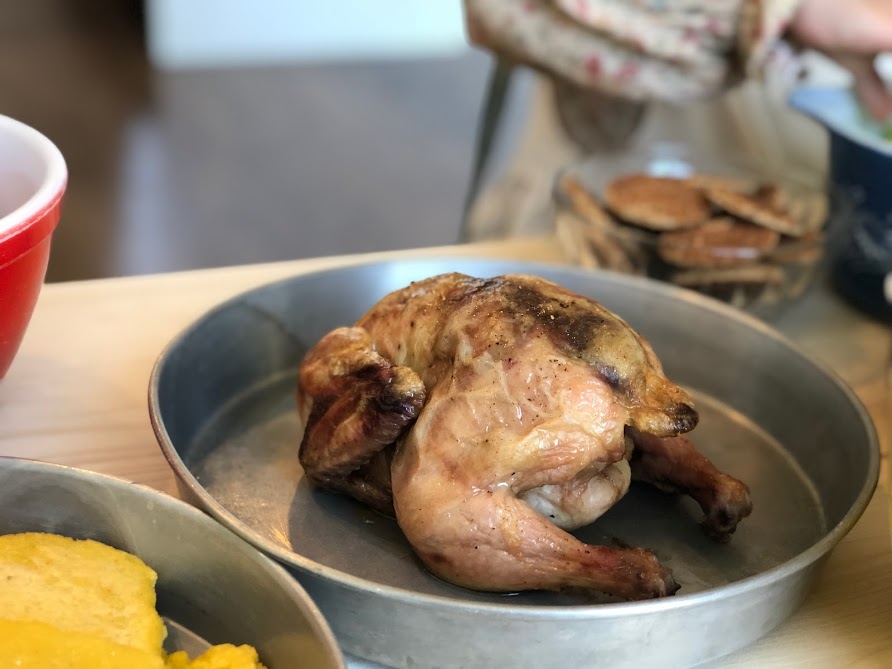
One of the activities that we did today was make maple sugar out of maple syrup. It was super easy!
The inspiration for this activity came from this story…
“During the difficult summer of 1855, the Saints in the new settlement of Provo, Utah, experienced another form of heaven-sent rescue, reports historian Donald Q. Cannon. “About two-thirds of the grain in Utah county is destroyed,” wrote eyewitness George A. Smith, “and a large black bug is devouring the potatoes. All the farms south … are nearly a desert. This is rather a dark picture, but I regret to say it is not overdrawn. Myriads of grasshoppers, like snowflakes in a storm, occasionally fill the air … as far as the eye can reach.” (Works Projects Administration, Provo: Pioneer Mormon City,Portland, Oregon: Binsfords & Mort, 1942, p. 84.) In addition to grasshoppers and Indians, the Provo settlers had faced other serious threats to their survival. During the severe winter of 1854–55, cattle, sheep, horses, and other animals froze to death. That spring, streams and rivers flooded homes and farms.
Already near poverty level, the grasshopper-stricken Saints had to make do with whatever food they had on hand. Children were not allowed to cook or help with meals for fear of wasting precious flour and sugar.
Then, having prayed for divine help, they experienced a miracle not unlike that of Moses’ people in the Paran Desert. At the end of July 1855, the people of Provo discovered a sugary substance on the leaves of trees near their homes. They called it “honey dew” or “sugar-manna,” and word of its discovery spread quickly through the frontier community.
Many speculated on the origin of the sticky, sweet substance. Some maintained that it came from cottonwood leaves; others that it was found on other leaves and even on rocks. Deposits as thick as window glass were reported.
Whatever its nature, the sugar-manna was badly needed. Sugar cost a dollar a pound and was in short supply. So the people set about gathering and processing the sugary substance. Sister Lucy M. Smith, wife of George Albert Smith, described with some pride the process she used:
“We had a very dry warm spring and summer and we were very destitute of sweet, so the Good Provider set HoneyDew to the Cottonwood and willow leaves, and so Brother George Adair and wife, Sister Hannah and myself took the necessary utensils, went among the bushes, cut bows washed off the sugar flakes into tubs, strained the sap, cleansed with milk and eggs then skimmed as it boiled. I understand the process necessary, as I had seen my Mother manufacture sugar from Maple sap. We four worked two days, made 50 lbs of nice sugar, besides feasting on Pancakes and Molasses, and making a quantity of candy for the children.
“Brother Adair carried over tithing to the Bishop, he said ours was the best of any brought in he wished to know the reason, I told him that he had an old sugar hand along that understood the business.” (“Historical Record of Lucy M. Smith,” Lucy M. Smith Papers, Historical Department of The Church of Jesus Christ of Latter-day Saints, Salt Lake City.)
Between three and four thousand pounds of sugar was made in this way. When Bishop Elias H. Blackburn of Provo took the tithing sugar to the General Tithing Office in Salt Lake City, he met President Brigham Young, who said that it was sugar from the Lord.” (The Grasshopper War of 1855 and the Provo Sugar Miracle, Ensign, February 1986)
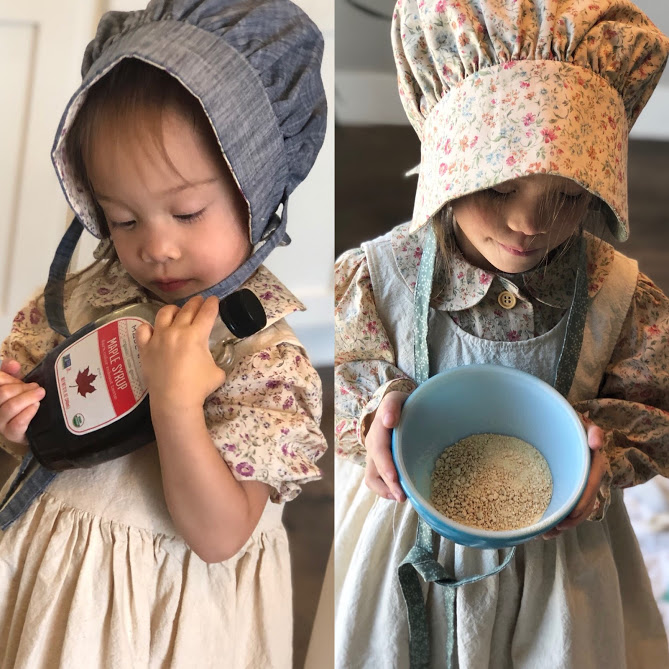

I know this photo looks a little strange, but this is honeydew syrup. We made it with honeydew melon and simple syrup (which I made from water and the maple sugar that we made).
This syrup (as well as the corn cakes, pigweed, and sego lily bulbs) was inspired by one of my ancestors’ stories.
This one occurred during the Grasshopper Wars, when millions of grasshoppers (or Rocky Mountain Locusts) destroyed tons of crops and brought the threat of starvation.
One account comes from Ann Sewell Hawkins daughter, Susannah:
”They spent the first winter in a one-room adobe hut in Salt Lake City. The roof and floor were made of packed dirt, and quilts served as the door and windows. James found work that winter with Jesse C. Little, who was very kind and paid generous wages.
In the spring of 1855, the family moved to Tooele. However, 1855 came to be known as the year of “the grasshopper war.” The grasshoppers devoured all the crops growing in the community, and the saints faced the very real prospect of starvation. However, the Lord provided for his people.
The people found that at night, a honeydew substance grew on the willows. When the branches were boiled, it produced a syrup that could be eaten along with sego lilies. The saints referred to the honeydew substance as “Manna,” and like the ancient Israelites, they found that they could always find enough in the morning to last them through the day. The manna would come every morning about sunup, falling on the willows and bushes along the creek. They would gather it by holding a pan under the bushes aid shaking the manna off into the pan. It tasted like honey dew melon.
Susannah remembered: “Our father would go out in the morning taking the children with him, he would dig the segos, and we children would gather them up until all our skillets were filled. We used to gather segos as large as small onions, also manna, which we gathered off the willows which we boiled down for syrup. We also had the pigweed and thistles boiled for greens. We had one corn cake a day. The meal was weighed and the cake baked and divided among the family.”
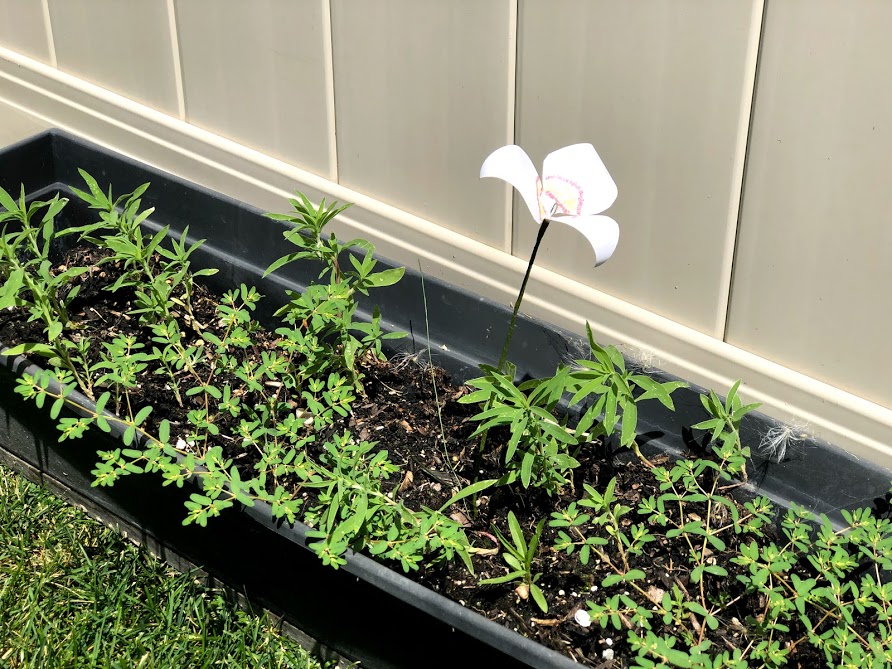
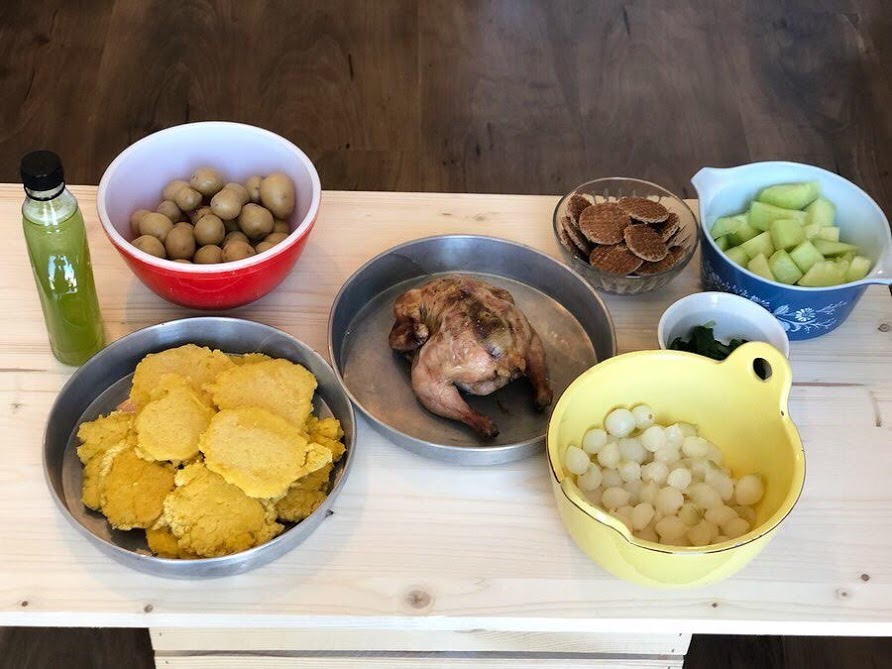
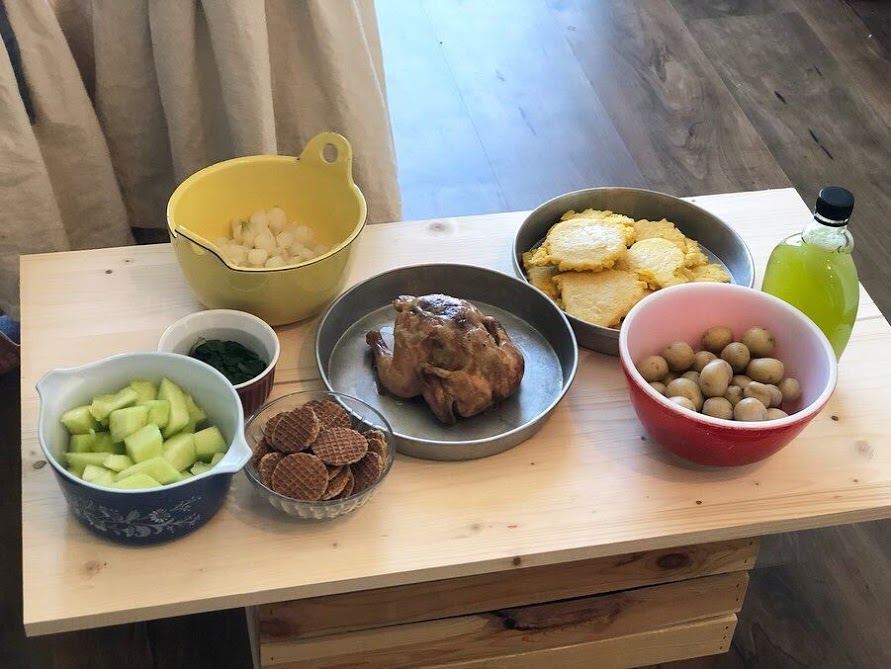
We feasted on symbols of Divine Providence from the stories that we learned about…
Quail (Cornish hen), corn cakes, sego lily bulbs (pearl onions for a similar look, tiny potatoes for a similar taste), Pigweed (spinach), HoneyDew / Sugar Manna (honeydew syrup and honey dew), and mini honey filled stroopwaffles (honey wafers… as manna was described in Exodus 16:31)
I find it really neat that the substance that Heavenly Father sent (both to the Children of Israel and to the pioneers) as manna was sweet in taste.
He could have sent anything, just to keep them alive, but He chose to send something sweet, something delicious. He knows how to give good gifts. And He LOVES to bless us.
